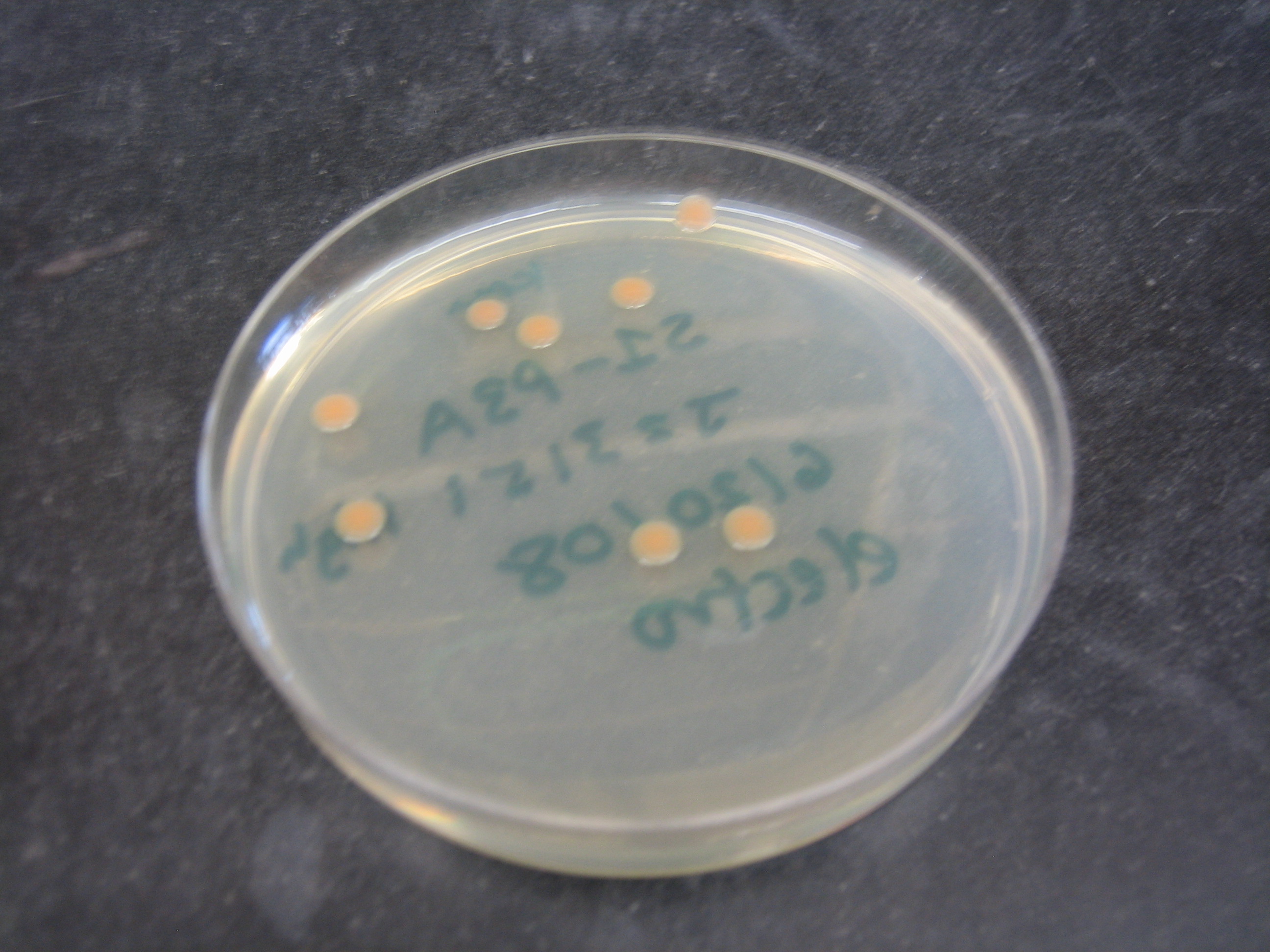Team:Harvard/Shewie
From 2008.igem.org
(New page: =Shewanella oneidensis MR-1= Shewanella oneidensis MR-1 is a gram-negative facultative anaerobe (Myers and Myers 1997). Under anaerobic conditions, it reduces a number of electron accept...) |
(→Cloning in Shewanella) |
||
| Line 6: | Line 6: | ||
The Shewanella oneidensis MR-1 genome was sequenced in 2002, greatly increasing its usefulness as a model organism. It was found that it had a 4,969,803 base pair circular chromosome and a 161,613 base pair plasmid (Heidelberg et al. 2002). When doing cloning in Shewanella, it has also been shown that plasmids with p15A origins replicate freely, whereas plasmids with a pMB1 origin of replication do not (Myers and Myers 1997). [We further found that …]. Shewanella grows at 30 ºC and forms round pink colonies on plates. It is resistant to ampicillin, but other resistance markers work (Daad). Together, these characteristics make Shewanella a genetically tractable organism good for exploring the possibilities of regulated bacterial electrical output. | The Shewanella oneidensis MR-1 genome was sequenced in 2002, greatly increasing its usefulness as a model organism. It was found that it had a 4,969,803 base pair circular chromosome and a 161,613 base pair plasmid (Heidelberg et al. 2002). When doing cloning in Shewanella, it has also been shown that plasmids with p15A origins replicate freely, whereas plasmids with a pMB1 origin of replication do not (Myers and Myers 1997). [We further found that …]. Shewanella grows at 30 ºC and forms round pink colonies on plates. It is resistant to ampicillin, but other resistance markers work (Daad). Together, these characteristics make Shewanella a genetically tractable organism good for exploring the possibilities of regulated bacterial electrical output. | ||
| + | |||
| + | =Picture of Shewanella Colonies= | ||
| + | [[Image:Shewanella colonies growing on plate.JPG|400px]] | ||
Revision as of 06:32, 27 October 2008
Shewanella oneidensis MR-1
Shewanella oneidensis MR-1 is a gram-negative facultative anaerobe (Myers and Myers 1997). Under anaerobic conditions, it reduces a number of electron acceptors such as MN(IV). This ability can be harnessed by microbial fuel cells (MFC) to produce an electric current (Bretschger et al. 2007). When the bacteria are grown anaerobically in the anode chamber of an MFC, they release electrons onto the anode, creating an electrical current. These diverse respiratory capabilities require a complex electron transport systems, including 39 c-type cytochromes (Heidelberg et al. 2002). These interesting characteristics of Shewanella make it an important model organism for both studies of bioremediation as well as biotechnology applications.
Cloning in Shewanella
The Shewanella oneidensis MR-1 genome was sequenced in 2002, greatly increasing its usefulness as a model organism. It was found that it had a 4,969,803 base pair circular chromosome and a 161,613 base pair plasmid (Heidelberg et al. 2002). When doing cloning in Shewanella, it has also been shown that plasmids with p15A origins replicate freely, whereas plasmids with a pMB1 origin of replication do not (Myers and Myers 1997). [We further found that …]. Shewanella grows at 30 ºC and forms round pink colonies on plates. It is resistant to ampicillin, but other resistance markers work (Daad). Together, these characteristics make Shewanella a genetically tractable organism good for exploring the possibilities of regulated bacterial electrical output.
 "
"
